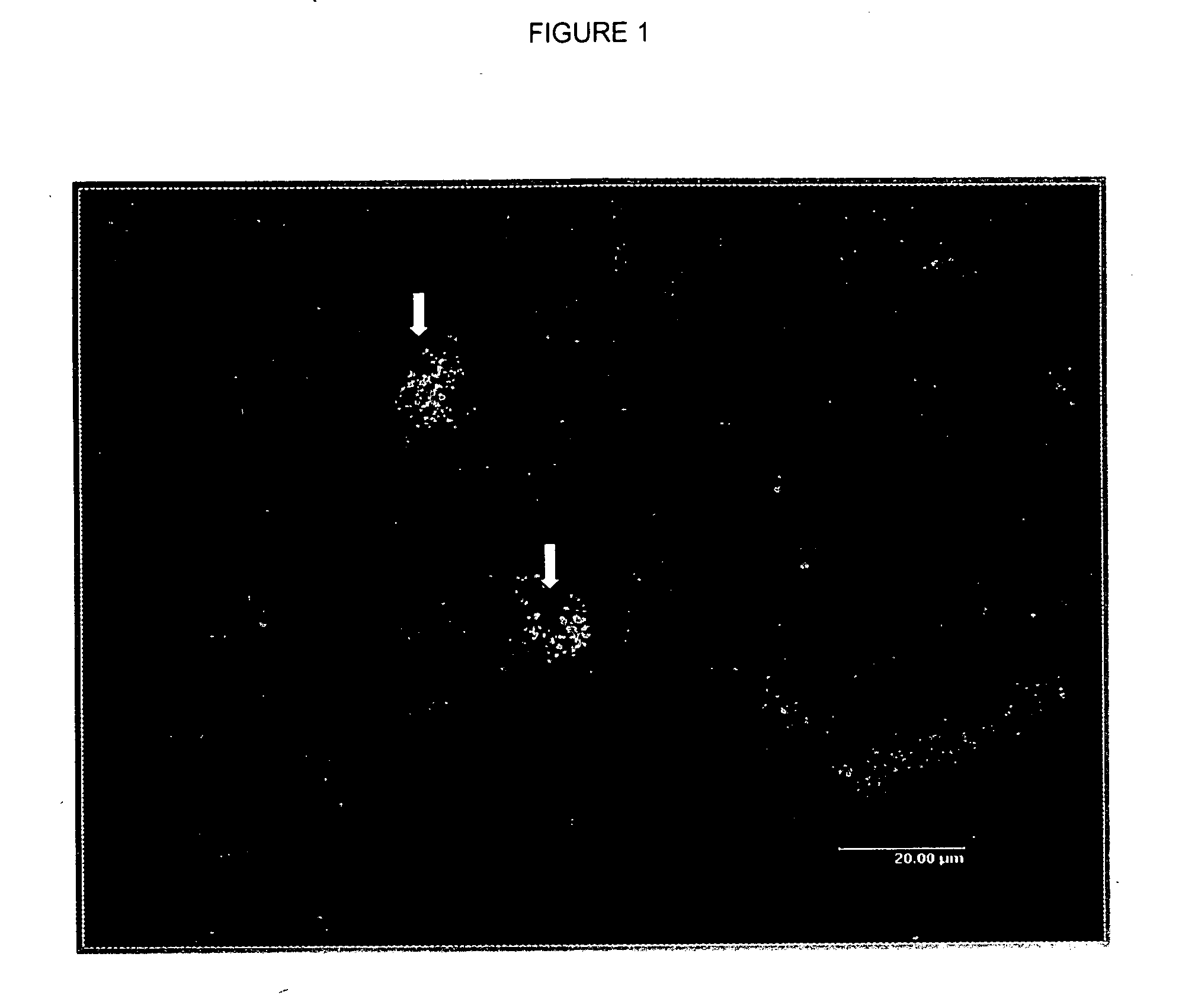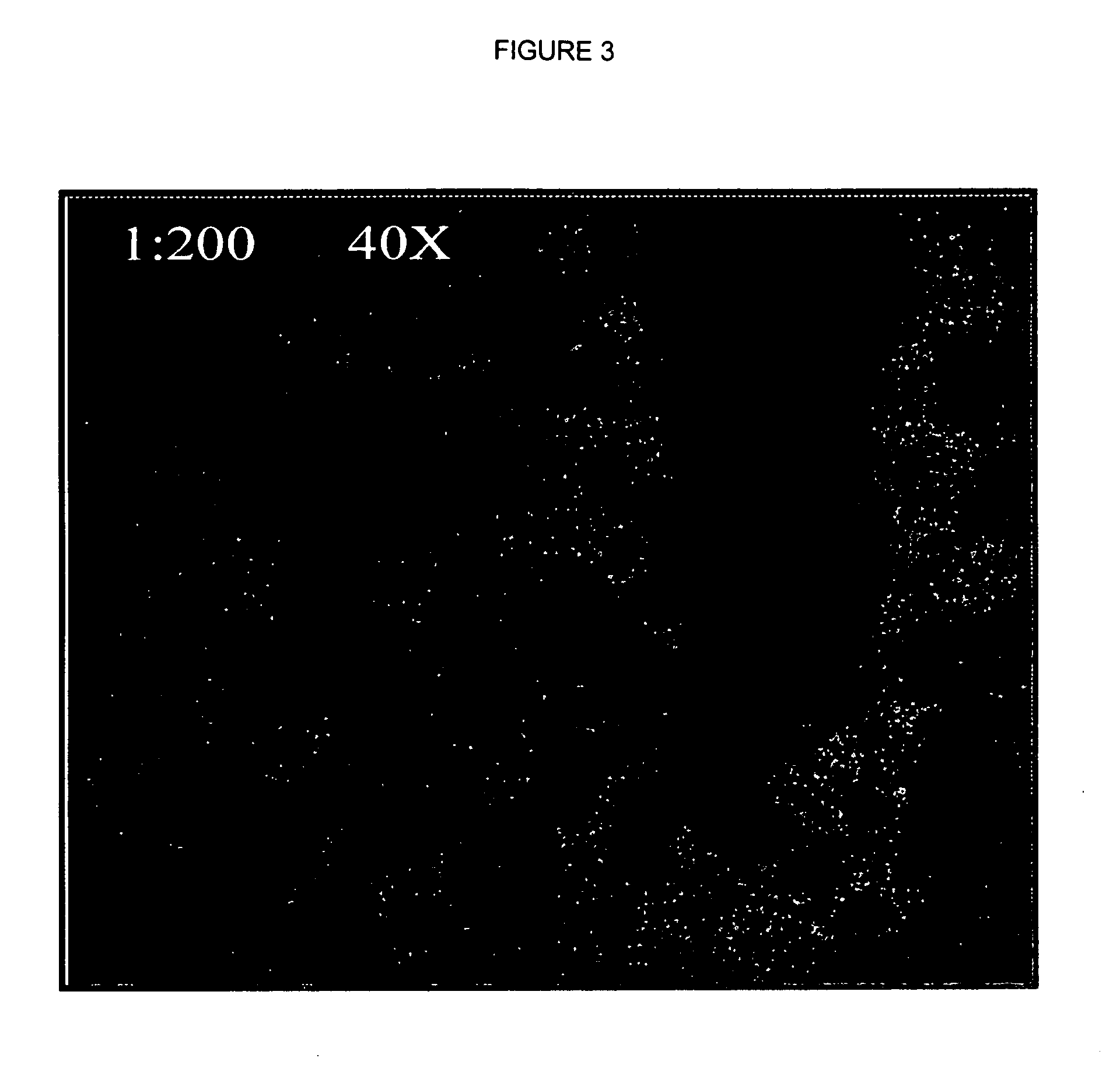Methods for measuring peroxisome proliferation and peroxisomal induction
a technology of peroxisome proliferation and induction, which is applied in the direction of instruments, antinoxious agents, peptide/protein ingredients, etc., can solve the problems of sample destruction, oxidative damage to the cell, and inability to enable tru
- Summary
- Abstract
- Description
- Claims
- Application Information
AI Technical Summary
Benefits of technology
Problems solved by technology
Method used
Image
Examples
example 1
Analysis of Peroxisome Proliferation and Induction of Peroxisomal Enzymes in Rat Liver
[0038] Anti-AOX and PTS-1 Antibodies:
[0039] For the anti-PTS-1 antibody, a PTS-1 peptide with the sequence CRYHLKPLQSKL (one-letter amino acid designation) was synthesized and conjugated to keyhole limpet hemocyanine (KLH), as previously described (see Gould et al., cited above). Rabbit polyclonal antibodies were raised against the conjugated PTS-1 peptide and the serum with the highest titers was used for all subsequent immunofluorescence experiments.
[0040] The antibody specific for AOX was a generous gift from Dr. Nobuteru Usuda and was prepared by immunizing rabbits with AOX purified from rat liver tissues (Usuda et al., The Journal of Histochemistry & Cytochemistry, vol. 47(9), pp. 1119-26 (September 1999)).
[0041] Animals and Tissue Preparation:
[0042] Sprague-Dawley rats were treated with a potent peroxisome proliferator by oral gavage daily for 30 consecutive days. The rats were divided i...
example 2
Analysis of Peroxisome Proliferation and Induction of Peroxisomal Enzymes in Dog Liver
[0057] Anti-AOX and Anti-PTS-1 Antibodies:
[0058] Anti-AOX and anti-PTS-1 antibodies were prepared as in Example 1, above.
[0059] Animals and Tissue Preparation:
[0060] Three beagle dogs were treated with 50 mg / kg of body weight of a potent peroxisome proliferator by oral gavage daily for 30 consecutive days. Three dogs remained untreated for use as control animals. After the 30 day period, the dogs were fasted overnight, anesthetized with CO2, and killed. Following necropsy, the right and left liver lobes were collected and fixed in 10% formalin buffer, processed for hematoxylin and eosin (H&E) staining and examined by light microscopy. Remaining liver tissues were frozen in paraffin blocks for later use.
[0061] Immunofluorescence:
[0062] 5-micron (μm)-thick liver sections were cut from the paraffin blocks, de-paraffinized using xylene rehydrated in alcohol, and washed in OptiMax wash buffer (OWB...
PUM
| Property | Measurement | Unit |
|---|---|---|
| thickness | aaaaa | aaaaa |
| thick | aaaaa | aaaaa |
| body weight | aaaaa | aaaaa |
Abstract
Description
Claims
Application Information
 Login to View More
Login to View More - R&D
- Intellectual Property
- Life Sciences
- Materials
- Tech Scout
- Unparalleled Data Quality
- Higher Quality Content
- 60% Fewer Hallucinations
Browse by: Latest US Patents, China's latest patents, Technical Efficacy Thesaurus, Application Domain, Technology Topic, Popular Technical Reports.
© 2025 PatSnap. All rights reserved.Legal|Privacy policy|Modern Slavery Act Transparency Statement|Sitemap|About US| Contact US: help@patsnap.com



